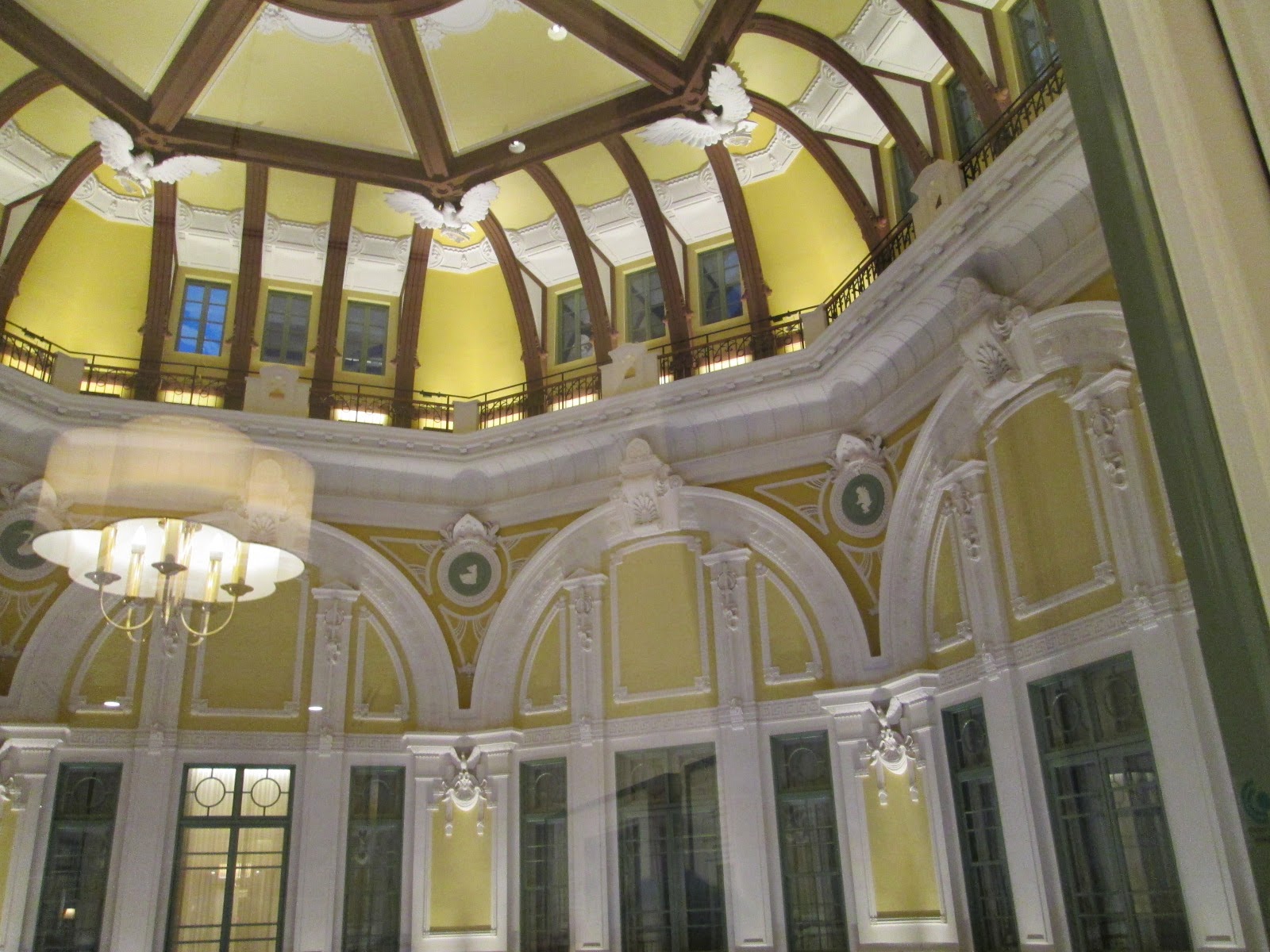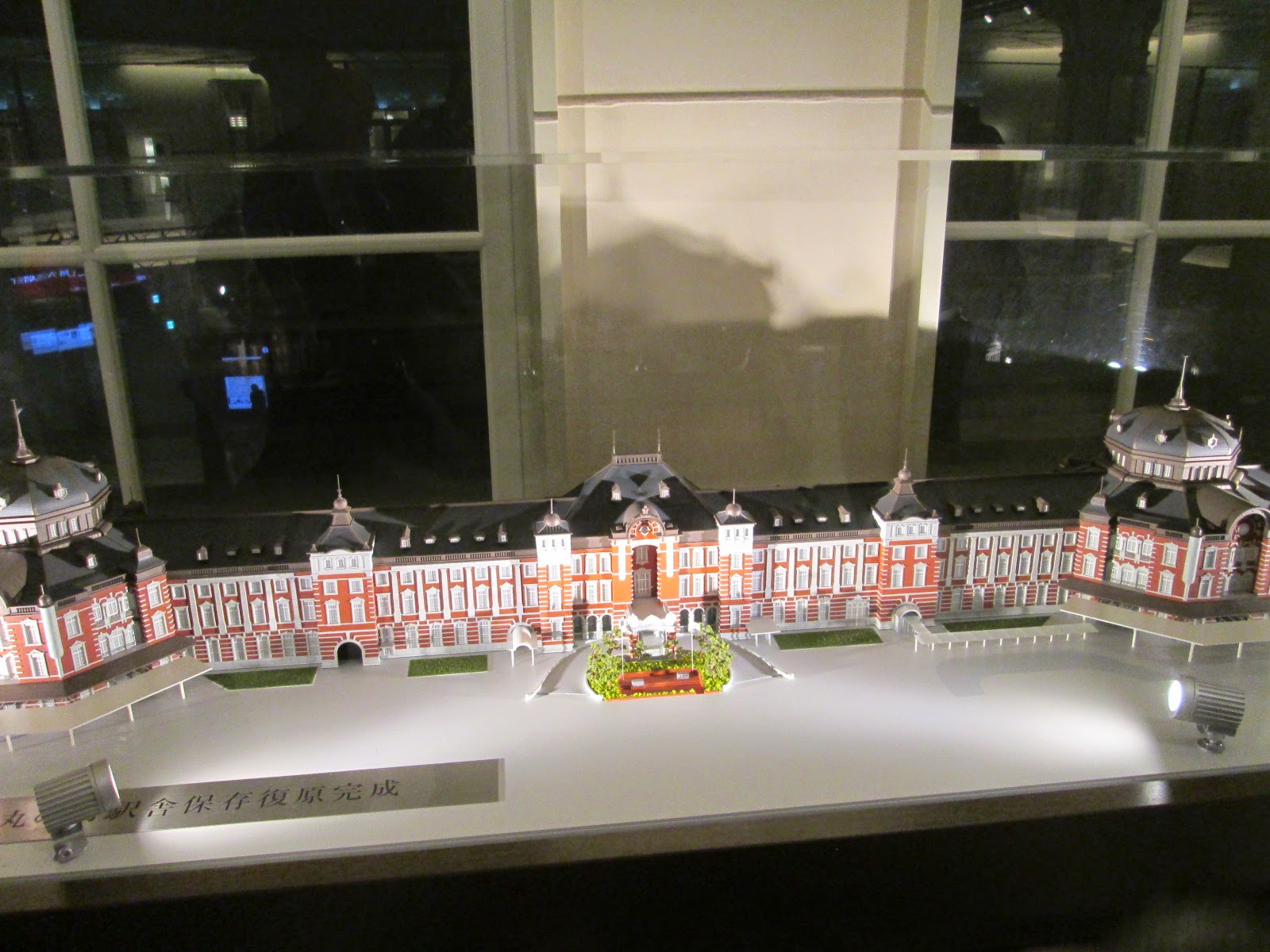Tokyo vs Amsterdam station building
More than ten years earlier before Tatsuno began to tackle the design of Tokyo station, Amsterdam Central Station was opened to the public in 1889. A guide book describes the architecture of this red-brick building with a magnificent facade as Neo-Renaissance style full of Gothic characteristics. This architectural expression reminds me of that of Tokyo station. I know nothing about architectural matters, but experts rejected the idea that Tatsuno was influenced by this preceding monument in his design of Tokyo station. To me the Amsterdam looks more majestic with a facade guarded by the two tall and rectangular turrets like in a palace, while Tokyo station gives me a kind of more modest atmosphere with the two octagonal domes in the South and North wings like in a church. It seems to me that Tatsuno had tried to harmonize a western Renaissance style with the traditional Japanese aesthetic appreciation.

Interior of Octagonal domes
Now we walk into these two octagonal domes capping the modest three stories building. These domes, which had been patched up with the damaged third floor cut down to the two stories building by the postwar reconstruction work, were restored to the Tatsuno’s original design in 2012 through the five years preservation and renovation project. The exterior of doom roofs and its interior space above the third floor were completely renovated. The interior of each dome is ornamented identically. At the vaulted ceiling inside of the dome, we will notice eight eagles positioned in the octagonal corners and also eight zodiac sign sculptures arranged on the dome’s wall according to the directions. The missing four zodiac animals are Rat (north), Rabbit (east), Horse (south), and Rooster (west). Interestingly these four missing reliefs of zodiac animals were found more recently on the four corners of the ceilings of another Tatsuno's building which he designed for his home Saga prefecture after Tokyo station. There are other interesting ornaments like keystone of samurai warrior’s helmet and Relief of flowers or sword found on the ceiling through the wall of third floor.

Tokyo station hotel
The hotel has been residing in Tokyo station Marunouchi building for a century. It began business in 1915, just the next year after the opening of station and had been also renovated during 2007 - 2012. Last November I had a privilege thanks to my friend to make a tour inside this hotel, seeing a luxurious banquet hall and the most expensive Royal Suite on the third floor featuring an awesome view of the Imperial Palace. It preserves classical decencies with relaxing atmosphere as well as various conveniences required to a modern accommodation. The Japanese Novel prize awarded novelist Yasunari Kawabata is known for his frequent stay in this hotel to write a novel.

A city becomes more and more modernized in this rapid world with commercial buildings competing its height with each other to look down smaller pedestrians walking on streets, and people want more convenience and speed in the capitalized economy with faster bullet trains taking us to a once remote place in a shorter time. But sometimes we want to indulge ourselves in a nostalgic landscape and think about our past quietly. Tokyo station Marunouchi-side seems to symbolize the people's desire to preserve and harmonize the old culture with the modern technological requirements.

(The End of "Tokyo station celebrates the 100th anniversary".)




No comments:
Post a Comment